Storm Francis uncovers more 'sunken' forest in Cardigan Bay
- Published
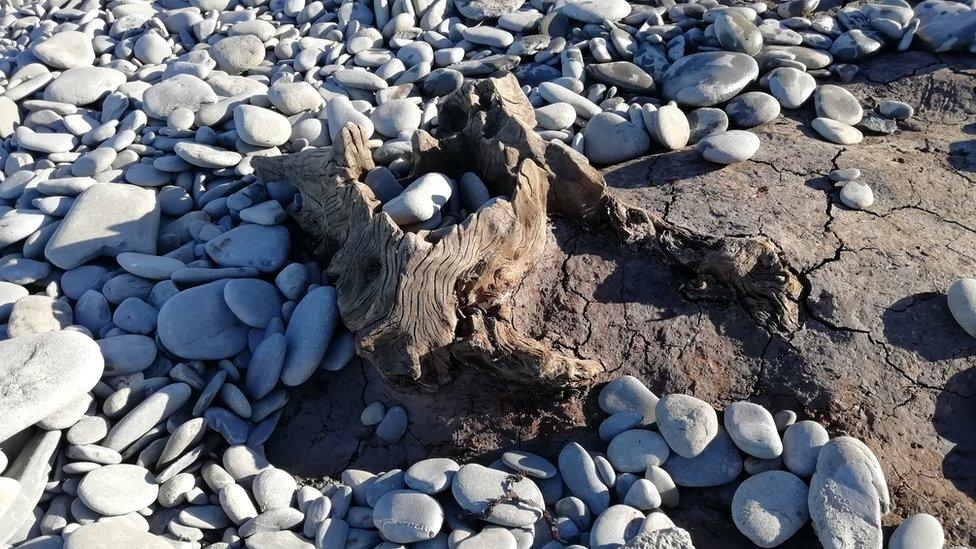
Several trees on Llanrhystud beach were found after Storm Francis, which hit Wales in August
A forest which was buried in sand more than 4,500 years ago may stretch further than thought after Storm Francis uncovered more hidden trees.
The petrified forest can often be seen in Borth, Ceredigion, after storms, but new trees have been seen 13 miles (21km) south in Llanrhystud.
Tests are being carried out at the Llanrhystud site to determine its age.
Dr Hywel Griffiths, from Aberystwyth University, said the find was "both exciting and worrying".
Dr Griffiths is part of a joint research project between groups in Wales and Ireland looking at coastal environmental change.
He said: "It's exciting because it's additional evidence of these climate change processes that have been going on for so long.
"But also worrying because we are seeing these landscape changes occur more often. It's due to the impact and influence of the storms that feel like they are happening more."
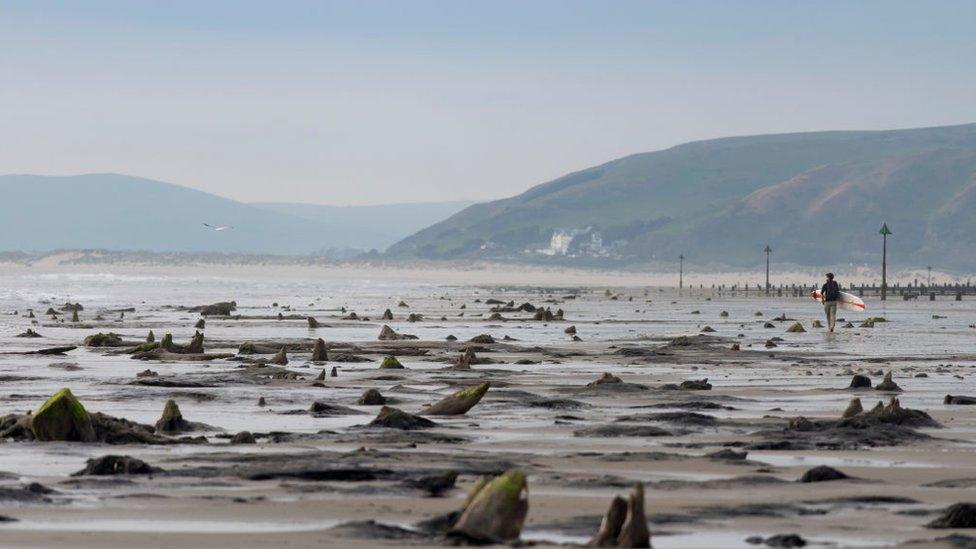
The exposed petrified forest in Borth
The forest has become associated with a 17th Century myth of a sunken civilization known as Cantre'r Gwaelod, or the Sunken Hundred.
According to the legend, the kingdom was lost at sea when Seithenyn, the guardian of sea defences, forgot to close the gates.
In one version of the myth, the forest stretched 20 miles to the west of Cardigan Bay.
Historian Gerald Morgan said: "It's an addition to what we already know about the extraordinary number of petrified trees that have been found all along the coast of Wales.
"It's exciting because we have found another one that hasn't been recorded yet."
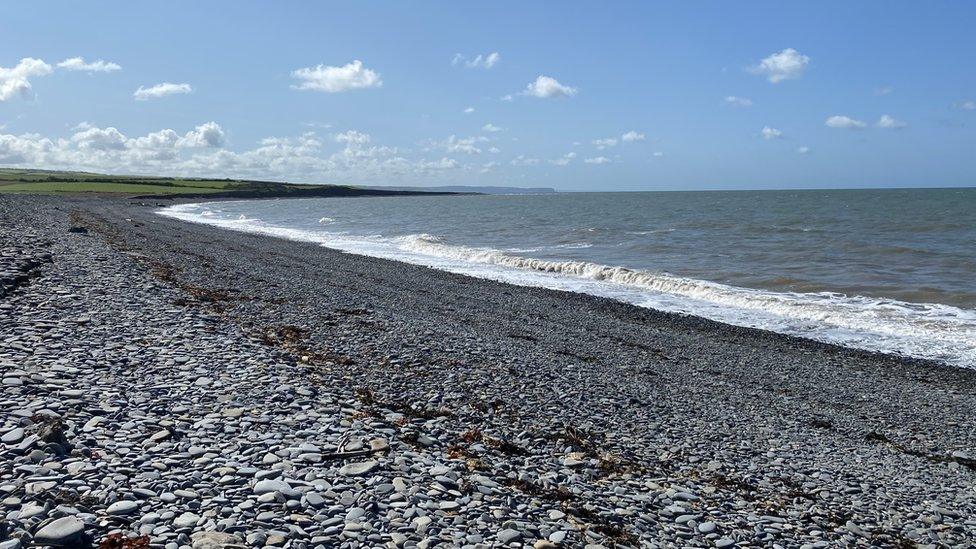
Llanrhystud beach lies 13 miles south of Borth, where the previous forest was uncovered
- Published25 May 2019
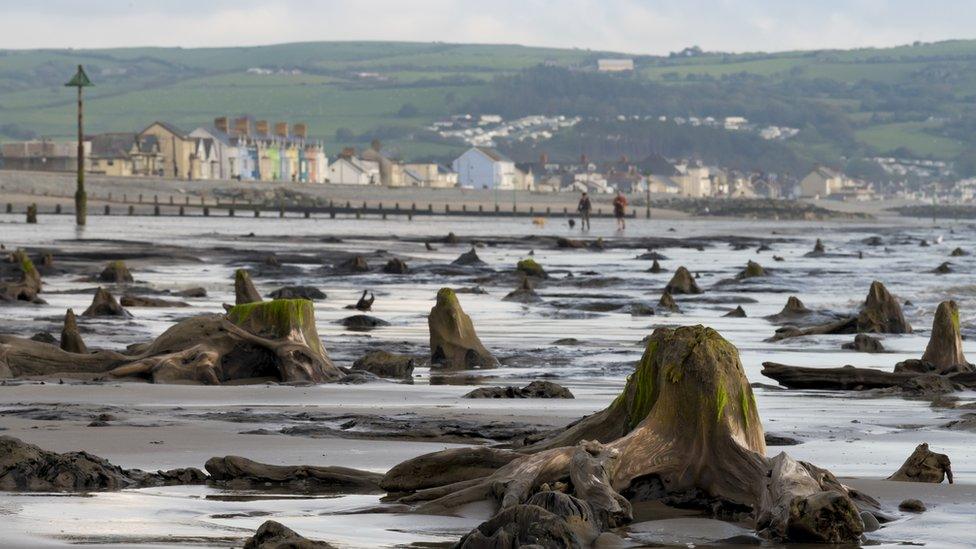
- Published21 December 2017
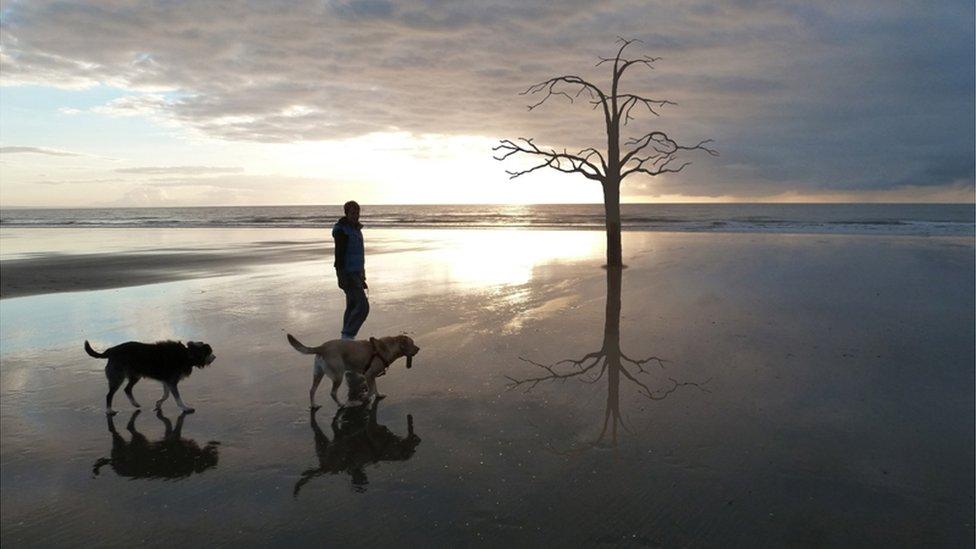
- Published25 February 2018
